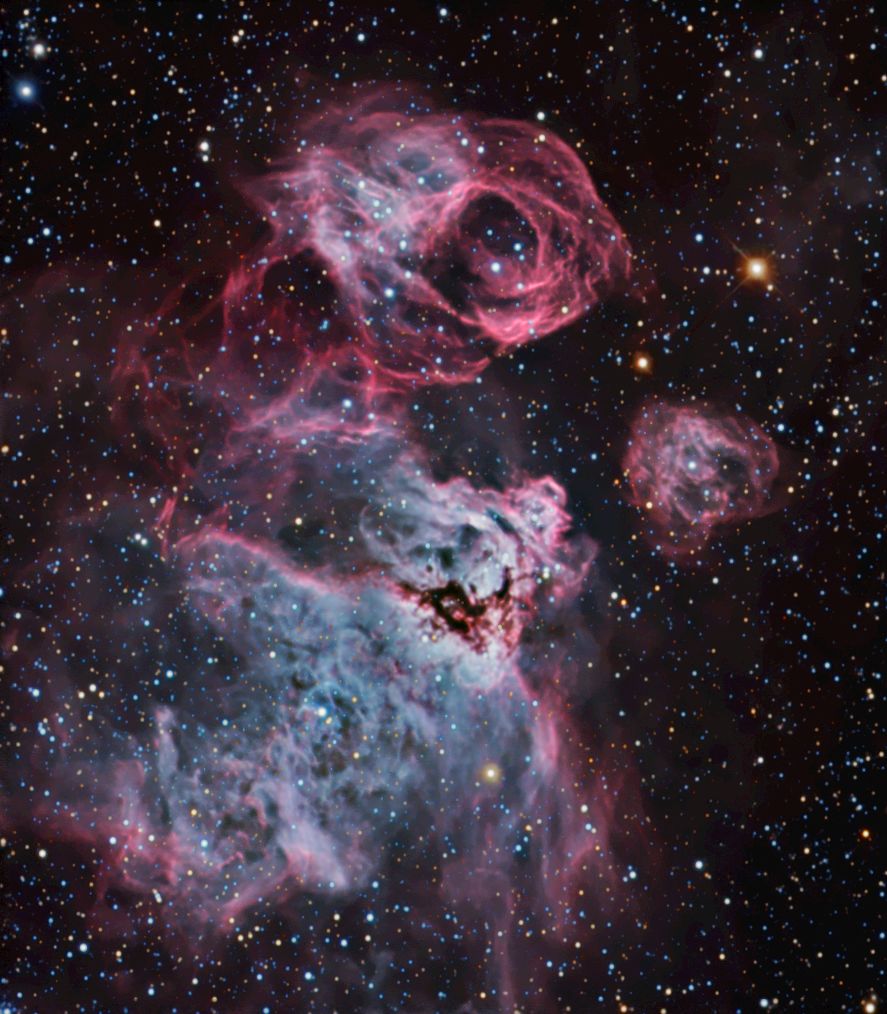

This portrait of life and death lurks within one of the Milky Way’s closest neighbors, the Large Magellanic Cloud (LMC). It can be found approximately 160,000 light-years from Earth in the constellation of Dorado.
Despite its small size (at least relative to the Milky Way and other spiral galaxies), the Large Magellanic Cloud has many extremely beautiful star forming regions—including the Tarantula Nebula (otherwise known as 30 Doradus), and N11. This one is decidedly more obscure, but quite beautiful nonetheless.
Technically, there are two distinct areas of interest; on the bottom, we have NGC 2035 (sometimes referred to as the Dragon’s Head Nebula). It is an immensely large nebular cloud, known to be in the process of forging many hot, high-mass stars. As they made the transition from protostars to the main-sequence phase of stellar evolution, they fervently emitted ultraviolet radiation, which fundamentally changed the surrounding clouds.
Opposite of that (above, in red) we see the death side of the spectrum. These complex filamentary structures were shaped by the fiery whims of a supernova—an event that follows the implosion of a massive star, which then ejects whatever gaseous materials that remain into space.